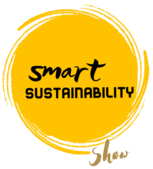Reimagining urban rooftops: green oasis On Top of Your World
As cities around the world grapple with rising temperatures, air pollution, and a lack of accessible green space, urban rooftops present a vast, largely untapped resource. The innovative conversion of these spaces into green roofs and rooftop gardens is transforming city skylines, providing environmental, social, and economic benefits. Where and how are cities globally turning their rooftops into vibrant green oases, and highlights the most innovative approaches to maximizing urban green space? Here’s what can be done:
The Untapped Potential of Urban Rooftops
Modern cities are dominated by concrete, glass, and steel. Yet, above the bustle, millions of square meters of flat, unused rooftop space stretch across urban landscapes. For example, New York City alone has approximately 40,000 acres of rooftop space, but less than 0.1% is currently greened. This represents a massive opportunity for cities to reclaim space for nature, community, and sustainability.
Innovative Approaches to Rooftop Green Space
Modular Green Roof Systems
Modular green roofs use pre-planted trays or modules that can be easily installed, replaced, and maintained. This approach allows for rapid greening of rooftops without extensive structural changes and can be tailored to fit both small residential buildings and large commercial complexes.
Biodiverse Green Roofs
Biodiverse green roofs are designed specifically to support local wildlife, including pollinators like bees and butterflies. By planting a mix of native species, these roofs become vital urban habitats, helping to counteract the loss of biodiversity in cities.
Rooftop Urban Farms
Cities like New York, Paris, and Tokyo have pioneered rooftop farms that provide fresh produce to local communities. These farms not only supply food but also create jobs, educational opportunities, and community gathering spaces.
Solar-Green Roof Integration
A cutting-edge trend is the combination of green roofs with solar panels. The vegetation cools the roof, boosting the efficiency of solar panels, while the panels provide partial shade, supporting a wider variety of plant species. This dual-use approach maximizes the sustainability potential of every square meter.
Adaptive Reuse of Existing Structures
Repurposing existing buildings, such as the transformation of Pier 57 in Manhattan into a two-and-a-half-acre rooftop park, demonstrates how adaptive reuse can create significant green space without new construction. These projects often become urban landmarks, offering respite from the heat and noise below.
Global Examples of where rooftop greening is making impact
Chicago City Hall Green Roof (USA): Planted with over 150 species, this pioneering project demonstrates how a city building can improve air quality, reduce energy costs, and manage stormwater.
ACROS Fukuoka (Japan): This innovative building integrates a 100,000-square-meter park across 15 stepped terraces, blending architecture with nature in the heart of the city.
Brooklyn Grange (USA): One of the world’s largest rooftop farms, it produces over 50,000 pounds of organic produce annually and serves as a model for urban agriculture
Considerations for Implementing these green rooftop oasis
If you’re thinking of turning your rooftop space into a green space, there are a few things to consider:
Structural Assessment: Ensure the building can support the additional weight of soil, plants, and water. Consult structural engineers before installation.
Waterproofing and Drainage: Proper waterproofing and drainage systems are essential (!) to prevent leaks and manage stormwater effectively.
Plant Selection: Use drought-resistant, native plants that can thrive in rooftop conditions and support local biodiversity.
Maintenance: Regular care, including irrigation, pruning, and monitoring, ensures the longevity and health of rooftop green spaces.
The Future of Urban Rooftop Greening
Cities and citizens are increasingly recognizing the value of green roofs and are incorporating them into building codes and urban planning. Who doesn’t want to be on top of the world in a beautiful, inspirational, green environment? Incentives such as tax credits, grants, and fast-track permits are encouraging property owners to invest in rooftop greening. Advances in technology, such as lightweight growing media, smart irrigation, and integrated solar systems, are making green roofs more accessible and efficient than ever. And … the ideas are making it possible.
Innovative rooftop greening is not just a trend—it is a vital strategy for building resilient, livable cities, necessary of all cities. By transforming underutilized rooftops into lush, productive, and sustainable spaces, we can address environmental challenges, enhance quality of life, and create a greener urban future for all and enjoy healthier air quality in the process.
If you have ideas, or experiences with rooftop greening - would you like to come on the TV show and share your experiences and learning points? Reach out to info@smartsustainabilityshow.com and our guest booker gets back to you!

